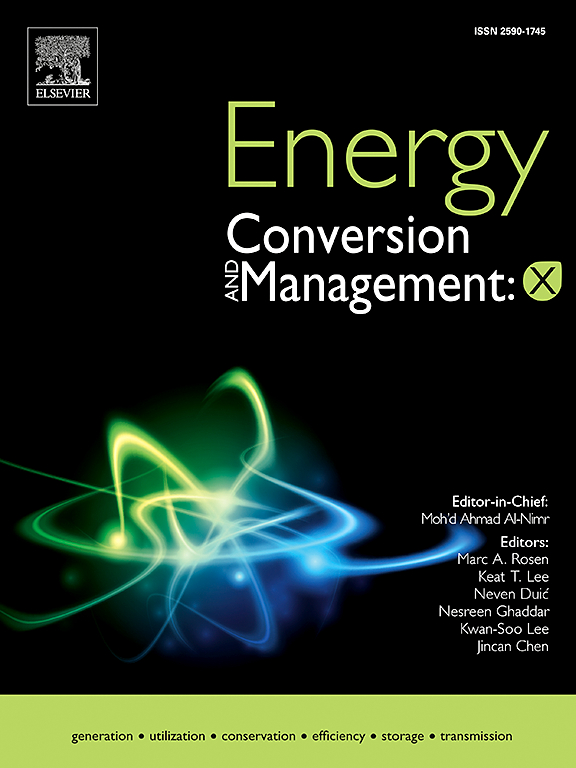Comparative life cycle greenhouse gas emission and cost assessment of hydrogen fuel and power for Singapore
IF 7.1
Q1 ENERGY & FUELS
引用次数: 0
Abstract
To identify lower-carbon and cost-effective hydrogen supplies for fuel and power generation in Singapore, we assessed the cradle-to-gate greenhouse gas (GHG) emissions and the landed costs of over fifty supply chains from Malaysia and Australia with current and emerging blue, turquoise, and green hydrogen production and carrier technologies. We found that with current technologies the total life cycle global warming potential of local H2 production using steam methane reforming with carbon capture (4.47 kg CO2e/kg H2) is lower than importing solar-generated green H2 from Australia transported as NH3 (6.48 kg CO2e/kg H2) due to large emissions from conversion and transportation processes in the latter supply chain. When also considering emerging technologies, turquoise H2 produced with the thermal decomposition of methane locally or in Malaysia is the most economical solution, while wind-generated H2 from Australia transported as liquefied H2 or NH3 produce the least GHG emissions. In addition, we projected the impacts of the Singapore carbon tax, methane abatement in NG production, and reduction of renewable energy embodied emissions and costs on the supply chains in the year 2030. We estimated that with the expected renewable energy improvements, the emissions and costs of power generated from imported solar-powered H2 could drop by as much as 74 % and 70 % respectively.

求助全文
约1分钟内获得全文
求助全文
来源期刊

Energy Conversion and Management-X
Multiple-
CiteScore
8.80
自引率
3.20%
发文量
180
审稿时长
58 days
期刊介绍:
Energy Conversion and Management: X is the open access extension of the reputable journal Energy Conversion and Management, serving as a platform for interdisciplinary research on a wide array of critical energy subjects. The journal is dedicated to publishing original contributions and in-depth technical review articles that present groundbreaking research on topics spanning energy generation, utilization, conversion, storage, transmission, conservation, management, and sustainability.
The scope of Energy Conversion and Management: X encompasses various forms of energy, including mechanical, thermal, nuclear, chemical, electromagnetic, magnetic, and electric energy. It addresses all known energy resources, highlighting both conventional sources like fossil fuels and nuclear power, as well as renewable resources such as solar, biomass, hydro, wind, geothermal, and ocean energy.
 求助内容:
求助内容: 应助结果提醒方式:
应助结果提醒方式:


